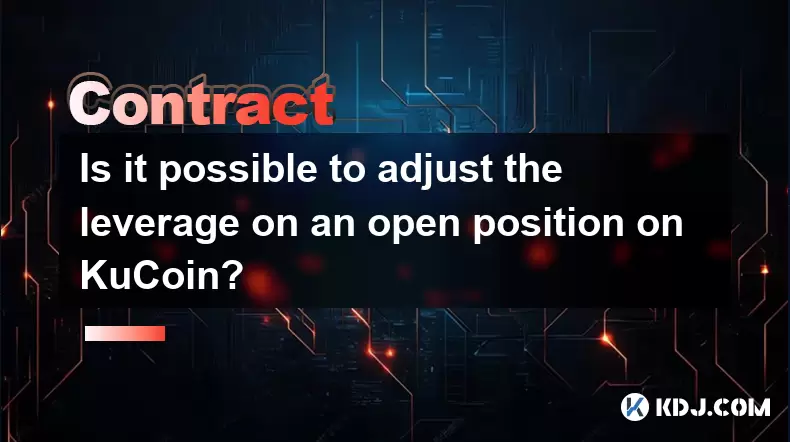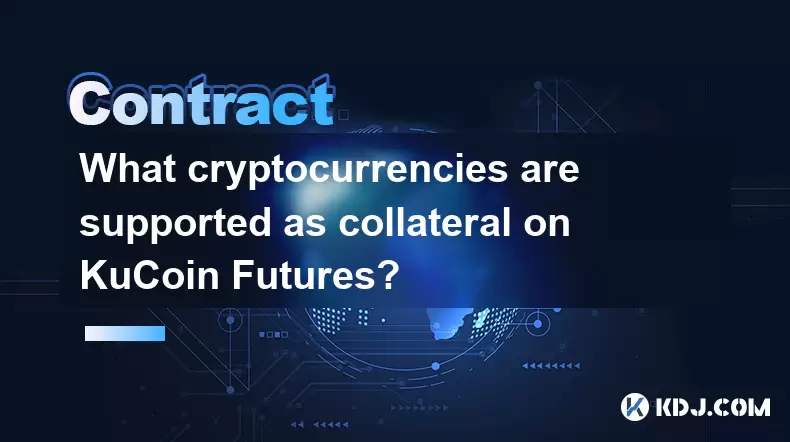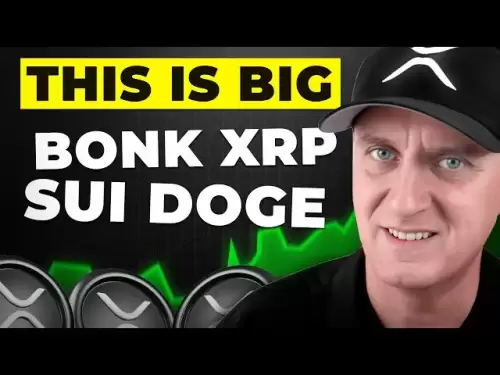-
 Bitcoin
Bitcoin $119000
-2.21% -
 Ethereum
Ethereum $4315
1.01% -
 XRP
XRP $3.151
-3.11% -
 Tether USDt
Tether USDt $0.0000
0.00% -
 BNB
BNB $808.5
-0.71% -
 Solana
Solana $175.8
-4.21% -
 USDC
USDC $0.9999
0.00% -
 Dogecoin
Dogecoin $0.2250
-3.92% -
 TRON
TRON $0.3469
1.77% -
 Cardano
Cardano $0.7818
-3.81% -
 Chainlink
Chainlink $21.47
-2.10% -
 Hyperliquid
Hyperliquid $43.30
-6.81% -
 Stellar
Stellar $0.4370
-2.84% -
 Sui
Sui $3.682
-4.40% -
 Bitcoin Cash
Bitcoin Cash $590.8
2.67% -
 Hedera
Hedera $0.2484
-5.20% -
 Ethena USDe
Ethena USDe $1.001
0.00% -
 Avalanche
Avalanche $23.10
-4.29% -
 Litecoin
Litecoin $119.2
-3.96% -
 Toncoin
Toncoin $3.409
0.90% -
 UNUS SED LEO
UNUS SED LEO $9.016
-1.29% -
 Shiba Inu
Shiba Inu $0.00001304
-3.82% -
 Uniswap
Uniswap $11.18
1.33% -
 Polkadot
Polkadot $3.913
-3.51% -
 Cronos
Cronos $0.1672
-3.08% -
 Dai
Dai $1.000
0.02% -
 Ethena
Ethena $0.7899
-4.70% -
 Bitget Token
Bitget Token $4.400
-1.23% -
 Pepe
Pepe $0.00001132
-5.93% -
 Monero
Monero $257.9
-6.44%
What are the trading rules of OKEx perpetual contract?
OKEx's perpetual contract market offers high liquidity and leverage, allowing traders to speculate on cryptocurrency prices with amplified exposure but also increased risk.
Dec 16, 2024 at 10:22 am

Understanding the Trading Rules of OKEx Perpetual Contract
OKEx, a leading cryptocurrency exchange, offers a perpetual contract trading platform that allows traders to speculate on the future price of cryptocurrencies without the need for physical delivery. This guide explores the essential trading rules governing OKEx perpetual contracts, providing a comprehensive understanding for both novice and experienced traders.
1. Contract Specifications:
Each perpetual contract on OKEx represents a specific cryptocurrency and has unique specifications:
- Contract Size: The number of units of the underlying cryptocurrency represented by each contract. For example, the BTC-USD perpetual contract represents 1 Bitcoin (BTC).
- Underlying Asset: The cryptocurrency underlying the contract, such as Bitcoin, Ethereum, or Dogecoin.
- Leverage: The maximum ratio of a trader's position size to their available margin, allowing amplified exposure to price movements with increased risk.
- Tick Size: The minimum price increment at which contracts can be traded.
- Funding Rate: A periodic payment made between traders holding long and short positions to maintain the contract's price in line with the underlying spot price.
2. Market Structure and Liquidity:
OKEx's perpetual contract market is characterized by high liquidity and a competitive order book, ensuring efficient trade execution and tight spreads:
- Order Types: Limit orders and market orders are available, allowing traders to specify a desired execution price or receive an immediate fill at the best available market price.
- Order Depth: Market participants can view the distribution of limit orders on the order book, providing insights into the market's buying and selling pressure.
- Limit Order Priority: Standing limit orders are matched based on their time and price priority, ensuring fairness and preventing manipulation.
3. Margin Trading and Leverage:
Perpetual contracts utilize margin trading, enabling traders to amplify their exposure to price movements beyond their initial capital:
- Margin: A deposit required to open and maintain a position, typically expressed as a percentage of the contract value.
- Leverage: The ratio of a trader's position size to their margin, increasing potential profits but also amplifying risk.
- Margin Call: When a trader's margin falls below a certain threshold, the exchange may issue a margin call, requiring the trader to add additional funds or close positions to restore the required margin level.
4. Position Management and Execution:
Traders can open both long and short positions in perpetual contracts, depending on their market expectations:
- Long Position: A bet that the underlying cryptocurrency's price will rise, resulting in potential profit if the price moves upwards.
- Short Position: A bet that the underlying cryptocurrency's price will decline, leading to potential profit if the price moves downwards.
- Position Entry and Exit: Market orders execute immediately at the best available market price, while limit orders allow traders to specify a desired execution price for greater control over trade execution.
- Take Profit and Stop Loss: Traders can place take profit or stop loss orders to automatically close their positions at specified profit or loss levels, helping to manage risk and secure profits.
5. Funding Mechanism and Fees:
Perpetual contracts employ a funding mechanism to keep the contract price in line with the underlying spot price:
- Funding Rate: A periodic payment transferred between traders holding long and short positions, ensuring the contract price reflects the fair market value.
- Funding Interval: The frequency at which the funding rate is applied, typically ranging from 8-hour intervals to daily.
- Fees: OKEx charges a trading fee based on the notional value of each trade, typically a tiered system that offers discounts for higher trading volumes.
6. Risk Management Strategies:
Effective risk management is crucial in perpetual contract trading, and OKEx provides several features to help traders mitigate risk:
- Position Sizing: Traders should carefully consider the size of their positions relative to their available capital and risk tolerance.
- Stop Loss Orders: Placing stop loss orders below entry prices for long positions or above entry prices for short positions helps limit potential losses.
- Hedging Strategies: Using multiple positions or trading instruments to offset the risk of price fluctuations, such as hedge contracts or spot trades.
- Volatility Monitoring: Keeping an eye on market volatility and adjusting positions or risk limits accordingly can help traders manage risk during periods of extreme price movements.
Disclaimer:info@kdj.com
The information provided is not trading advice. kdj.com does not assume any responsibility for any investments made based on the information provided in this article. Cryptocurrencies are highly volatile and it is highly recommended that you invest with caution after thorough research!
If you believe that the content used on this website infringes your copyright, please contact us immediately (info@kdj.com) and we will delete it promptly.
- Bitcoin, CPI, and Market Fears: Navigating the Crypto Landscape
- 2025-08-12 15:10:13
- BTC Traders Eye ETH Targets as CPI Looms: A New York Minute
- 2025-08-12 15:10:13
- Ethereum, Cold Wallets, and Presales: What's Hot Now?
- 2025-08-12 15:30:12
- Bitcoin, XRP, and Monetary Alternatives: Navigating the Crypto Landscape in 2025
- 2025-08-12 15:30:12
- XRP Breakout Watch: Institutional Volume Signals Potential Surge
- 2025-08-12 15:35:19
- XRP, Market Cap, and Institutional Adoption: A New Era for Crypto?
- 2025-08-12 15:35:19
Related knowledge

Is it possible to adjust the leverage on an open position on KuCoin?
Aug 09,2025 at 08:21pm
Understanding Leverage in KuCoin Futures TradingLeverage in KuCoin Futures allows traders to amplify their exposure to price movements by borrowing fu...

What cryptocurrencies are supported as collateral on KuCoin Futures?
Aug 11,2025 at 04:21am
Overview of KuCoin Futures and Collateral MechanismKuCoin Futures is a derivatives trading platform that allows users to trade perpetual and delivery ...

What is the difference between realized and unrealized PNL on KuCoin?
Aug 09,2025 at 01:49am
Understanding Realized and Unrealized PNL on KuCoinWhen trading on KuCoin, especially in futures and perpetual contracts, understanding the distinctio...

How does KuCoin Futures compare against Binance Futures in terms of features?
Aug 09,2025 at 03:22am
Trading Interface and User ExperienceThe trading interface is a critical component when comparing KuCoin Futures and Binance Futures, as it directly i...

How do funding fees on KuCoin Futures affect my overall profit?
Aug 09,2025 at 08:22am
Understanding Funding Fees on KuCoin FuturesFunding fees on KuCoin Futures are periodic payments exchanged between long and short position holders to ...

What is the distinction between mark price and last price on KuCoin?
Aug 08,2025 at 01:58pm
Understanding the Basics of Price in Cryptocurrency TradingIn cryptocurrency exchanges like KuCoin, two key price indicators frequently appear on trad...

Is it possible to adjust the leverage on an open position on KuCoin?
Aug 09,2025 at 08:21pm
Understanding Leverage in KuCoin Futures TradingLeverage in KuCoin Futures allows traders to amplify their exposure to price movements by borrowing fu...

What cryptocurrencies are supported as collateral on KuCoin Futures?
Aug 11,2025 at 04:21am
Overview of KuCoin Futures and Collateral MechanismKuCoin Futures is a derivatives trading platform that allows users to trade perpetual and delivery ...

What is the difference between realized and unrealized PNL on KuCoin?
Aug 09,2025 at 01:49am
Understanding Realized and Unrealized PNL on KuCoinWhen trading on KuCoin, especially in futures and perpetual contracts, understanding the distinctio...

How does KuCoin Futures compare against Binance Futures in terms of features?
Aug 09,2025 at 03:22am
Trading Interface and User ExperienceThe trading interface is a critical component when comparing KuCoin Futures and Binance Futures, as it directly i...

How do funding fees on KuCoin Futures affect my overall profit?
Aug 09,2025 at 08:22am
Understanding Funding Fees on KuCoin FuturesFunding fees on KuCoin Futures are periodic payments exchanged between long and short position holders to ...

What is the distinction between mark price and last price on KuCoin?
Aug 08,2025 at 01:58pm
Understanding the Basics of Price in Cryptocurrency TradingIn cryptocurrency exchanges like KuCoin, two key price indicators frequently appear on trad...
See all articles

























































































